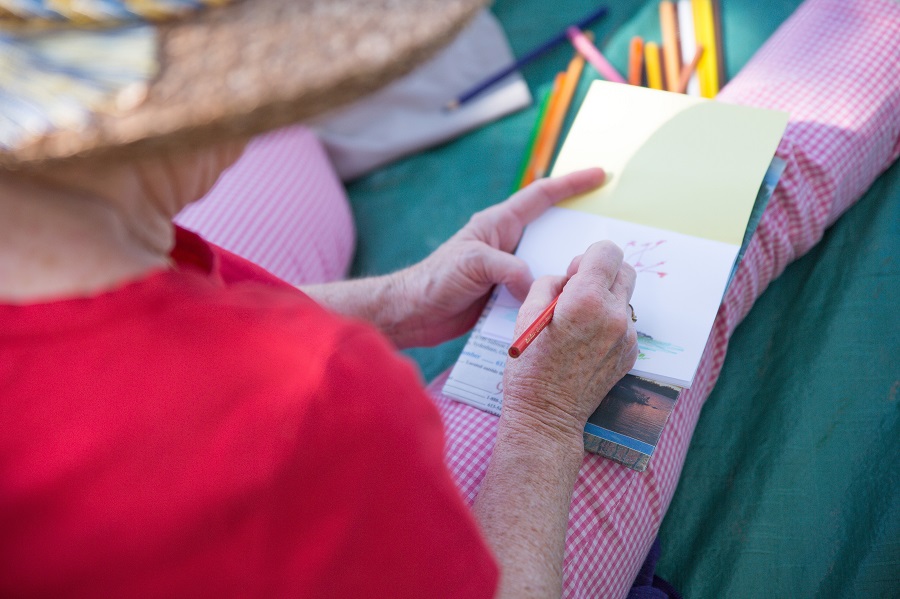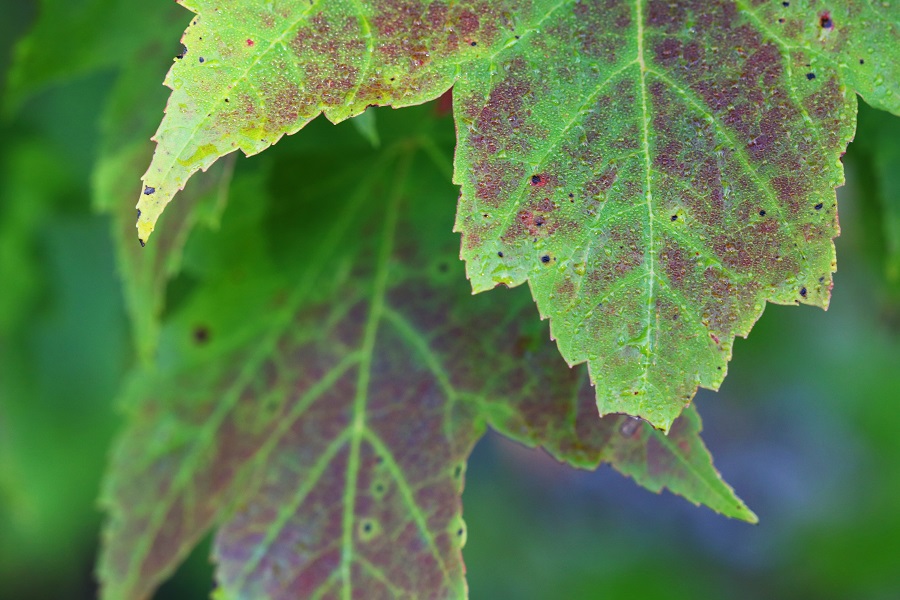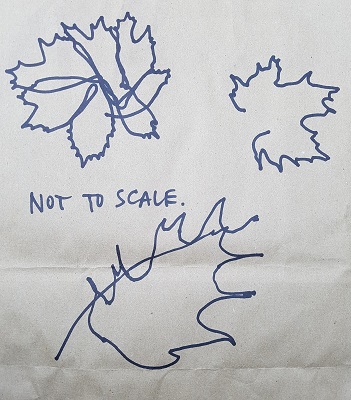Today’s blog post comes from Corina Brdar.
A different way to be mindful in nature is through nature journaling. Using writing and sketching as tools can be a calming way to look more deeply and experience nature more fully.
Like our previous mindfulness exercises, this too is a judgment-free practice. You’re not creating a piece of art. You’re using a notebook to help you pay attention and truly observe.
When you approach nature journaling with an easy-going attitude, you’re free to make mistakes. The blank page becomes a lot less intimidating when it doesn’t matter what kinds of marks you make on it.
Nobody has to see this but you.
Find inspiration anywhere
Once again, find a spot outdoors where you feel safe and comfortable if you’re able to. It doesn’t even have to be the most scenic vista in the park or your backyard. A picnic table next to a tree is perfect.

All you need is a pen and a piece of paper.
Practice observing
This is your nature journal (or nature back-of-the-envelope), so you’re free to observe and record whatever catches your interest.

If you’re stuck, we’d like to suggest you pay attention to leaves. At first glance, they may all look like pointy green ovals (unless you’ve parked yourself next to an oak or maple tree). But at this time of year, there’s a lot going on in our leafy province.
Some trees will have barely started to produce their baby leaves, while others will have lush green foliage that may have already been munched by hungry insects. Some trees may even have flowers, which can take a lot of unusual forms.

Look at a few different leaves around you.
Are they all the same shade of green, or are some reddish or purple or gold?
You can try to describe their colour in words, or you can use some art supplies to try capturing them. This is a challenge even for experienced artists, so remember why you’re doing this.
Why are you doing this?
To let your mind be fully absorbed in what you’re doing, which is observing nature.
That’s it.
Pressure’s off — if you’re paying attention to nature, you’ve succeeded already.

Try drawing the outline of a leaf. There are a few fun ways to try this. You can do what’s called a blind contour: look only at the leaf, not your pen and paper, and draw the outline without lifting your pen.

You can try drawing it with your non-dominant hand (or your toes if you have prehensile feet!).
You can use a timer to take a full 60 seconds, or take time to consciously copy the outline of the leaf by letting your eyes slowly travel its edge. There’s no need to rush this.
If the thought of drawing makes you seize up with anxiety you can ease into things by using words or numbers. Write down how you would describe your leaf’s outline as if you were speaking on the phone.
Count how many veins, or lobes, or teeth your leaf has, or how many different leaf shapes you can see around you.
Where does your attention lead you?

As you try these simple exercises, what are you paying attention to?
Perhaps it’s the way the leaves are arranged on the twig, or how they’re attached, or the pattern of their veins. Maybe you find yourself wondering why they have different shapes, or who chewed a hole in your leaf.
You don’t need to find answers to your questions at this moment (although close observations can lead to surprising discoveries).
These exercises are tools to anchor you in nature, in this moment, letting your mind rest on the simple outline of a leaf.
Build a habit around a hobby
Even if you only try this once, you may notice that the next time you’re in nature you no longer see a sea of pointy green ovals.

Your future experience of nature may become richer from the time you spent focused on this one element.
For more about nature journaling:
For more mindfulness exercises:
